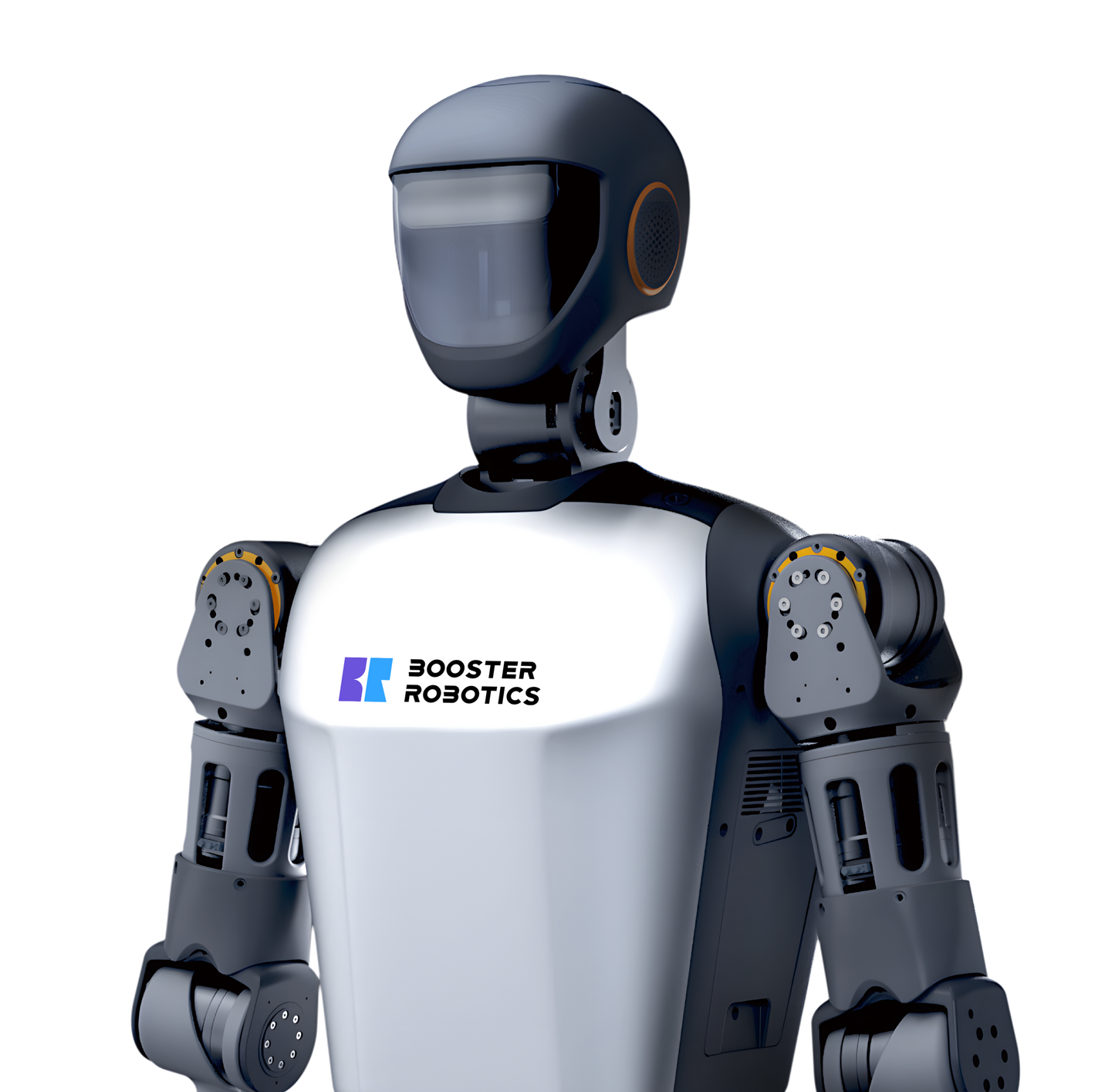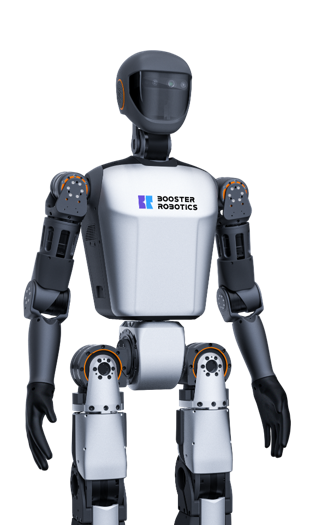K Robotic
Booster T1 Made For developers
Booster T1 Made For developers
Couldn't load pickup availability
In stock
Booster T1 is an advanced humanoid robot platform designed for research, education, and AI development. Equipped with 23 degrees of freedom, powerful 130 N·m joint torque, and NVIDIA AGX Orin delivering 200 TOPS of AI performance, it enables complex human-like motion, perception, and decision-making. T1 supports ROS 2, open APIs, and leading simulation tools like Isaac Sim and Mujoco, making it ideal for robotics labs, universities, and developers. With depth vision, voice interaction, and multimodal capabilities, this programmable bipedal robot accelerates innovation in control, locomotion, and human-robot interaction research.


🚀 Booster K1 Humanoid Robot — Product Overview
Product Summary
| Product Name | Booster K1 Humanoid Robot |
|---|---|
| Manufacturer | Beijing Booster Robotics Co., Ltd. |
| Positioning | A developer-friendly humanoid platform designed for education, research, and robotics competitions such as RoboCup. |
| Height / Size | Approx. 95 cm |
| Degrees of Freedom | 22 DoF |
| Weight | About 19.5 kg (including battery) |
| Computing Platform | NVIDIA Jetson Orin NX (40 TOPS version) |
| Control Mode | Full Force Control – supports torque, speed, and position hybrid control |
| Sensors / Inputs | RGB-D camera, 9-axis IMU, microphone array, speakers |
| Software Framework | Supports ROS 2 and provides low-level joint/sensor APIs and high-level motion APIs; compatible with Isaac Sim, MuJoCo, and Webots |
| Competition Support | Official RoboCup 3 v 3 demo project (open-sourced modules for vision, decision and game control) |
🧠 Key Features & Technologies
1. Force-Control Actuators
K1’s dual-encoder actuators enable precise hybrid control of torque, velocity, and position, delivering smooth, natural, and impact-resistant motions.
2. AI Computing Platform — NVIDIA Orin NX (40 TOPS)
Based on NVIDIA Ampere architecture GPU with 512 CUDA cores and 64 Tensor Cores, the Orin NX provides up to 40 TOPS (INT8) AI inference performance. It supports TensorRT, CUDA, cuDNN, and DeepStream for optimized deep learning deployment. With 10–25 W power consumption, it achieves a strong balance between performance and battery life, enabling on-device vision processing, speech recognition, and motion planning without cloud dependency.
3. Open Software Ecosystem
Full ROS 2 integration with compatibility for Gazebo, Isaac Sim, MuJoCo, and Webots. An official open-source RoboCup framework is available on GitHub, including modules for vision, decision-making, and game control. Developers can freely customize AI modules and control algorithms.
4. Education & Research Friendly
Provides SDK and Python / C++ APIs for robotics and AI teaching. Ideal for experiments in reinforcement learning, humanoid locomotion, and multi-sensor fusion.
5. Extensible Design
Supports 5G / Wi-Fi communication for remote control and multi-robot coordination. Modular hardware design allows easy replacement or addition of cameras, joints, and sensors.
⚙️ NVIDIA Jetson Orin NX (40 TOPS) Specifications
| AI Performance | Up to 40 TOPS (INT8) AI inference performance |
|---|---|
| GPU | Ampere architecture, 512 CUDA cores + 64 Tensor Cores |
| CPU | 6-core Arm Cortex-A78AE @ 1.9 GHz |
| Memory | 8 GB LPDDR5 (102 GB/s bandwidth) |
| Power Modes | Configurable from 10 W to 25 W |
| Camera Interfaces | 3 × CSI channels, supports 4K @ 60 fps input |
| I/O Expansion | USB 3.2, Ethernet, UART, I²C, SPI, and more |
| AI Framework Support | TensorRT, CUDA, PyTorch, TensorFlow, DeepStream, cuDNN, etc. |
Compared with the 117 TOPS (16 GB) version, the 40 TOPS variant offers lower power consumption and excellent energy efficiency, making it ideal for medium-sized humanoid robots, academic projects, and embedded AI applications.


